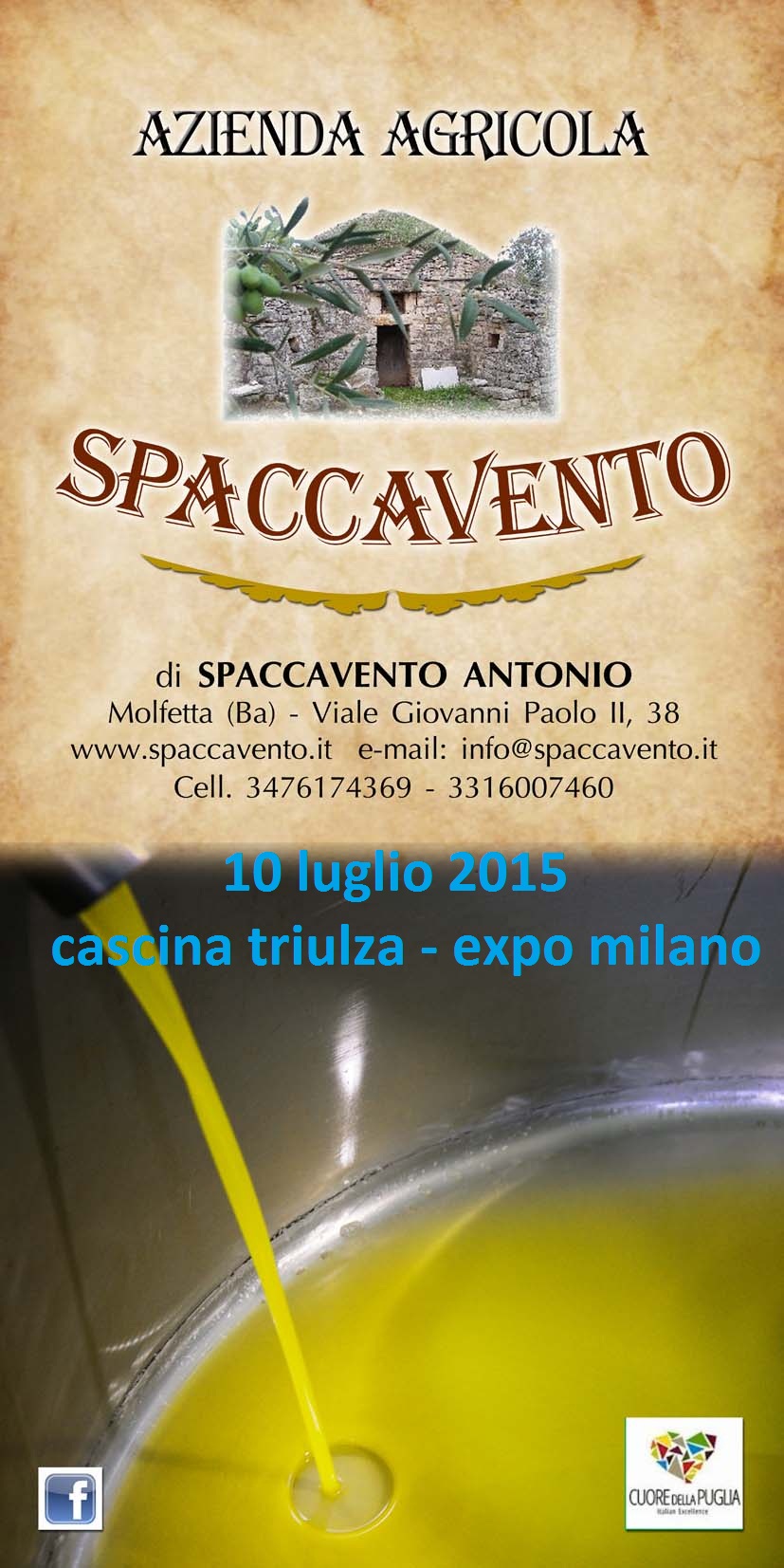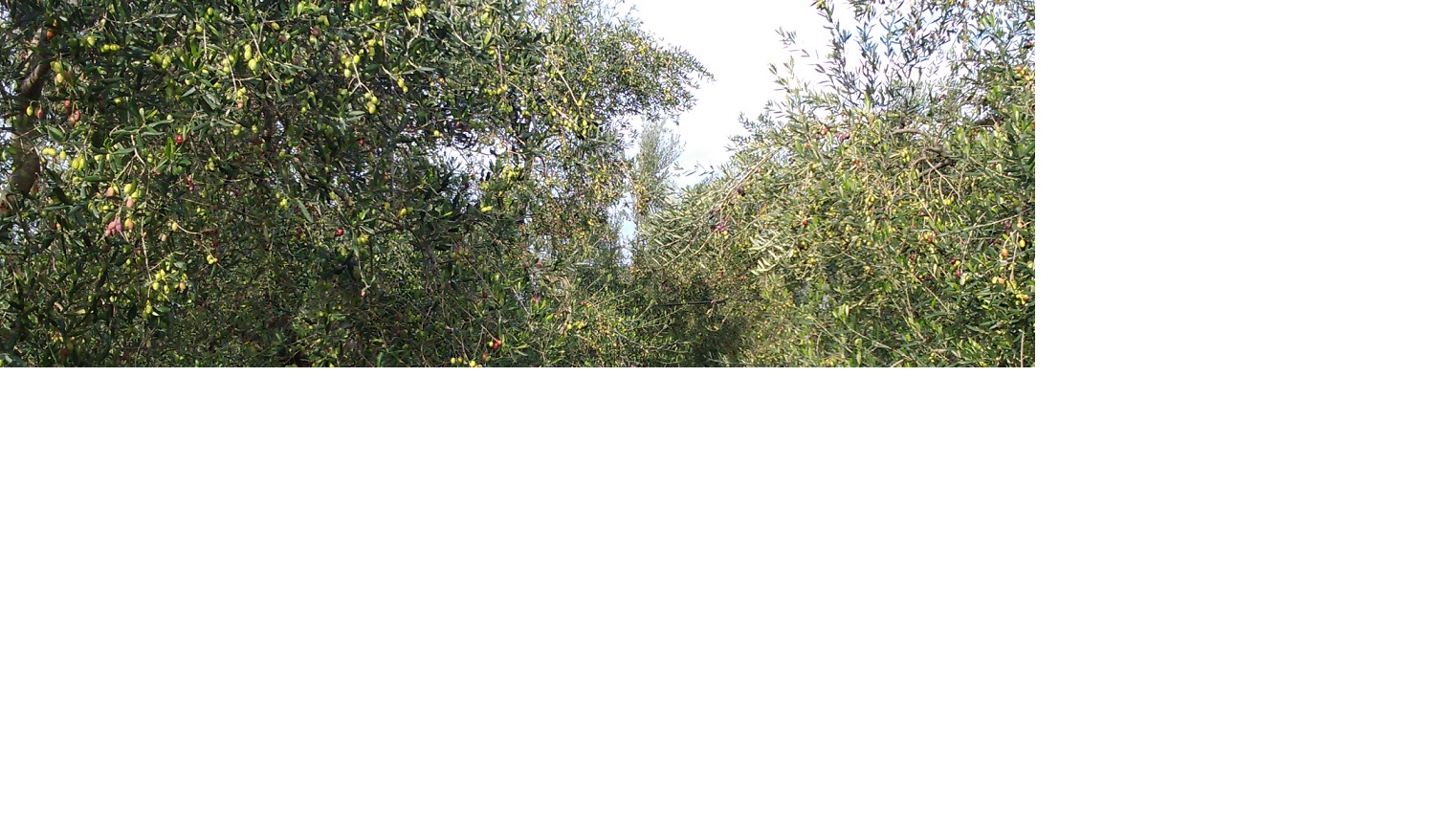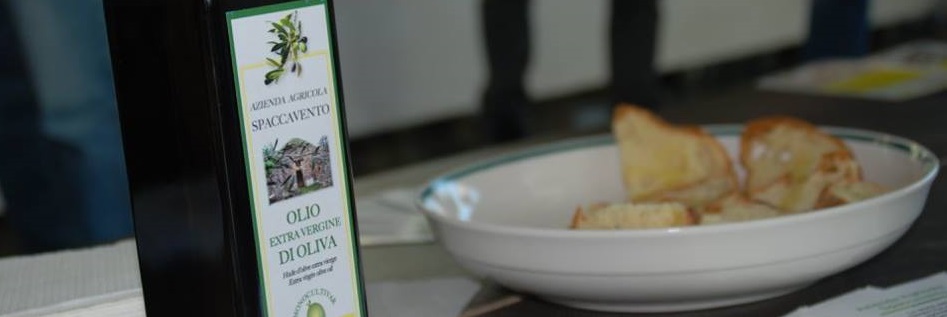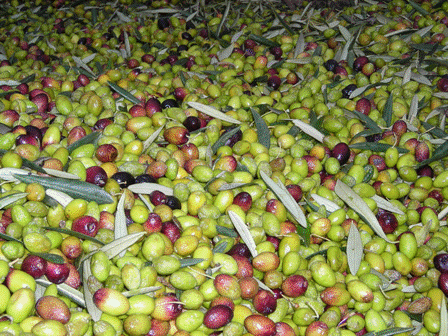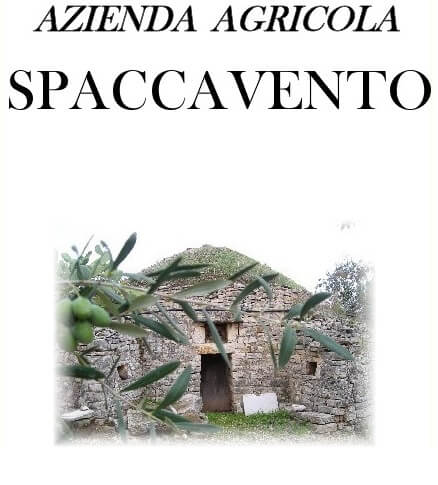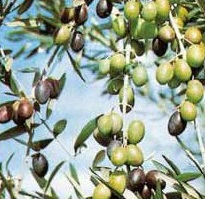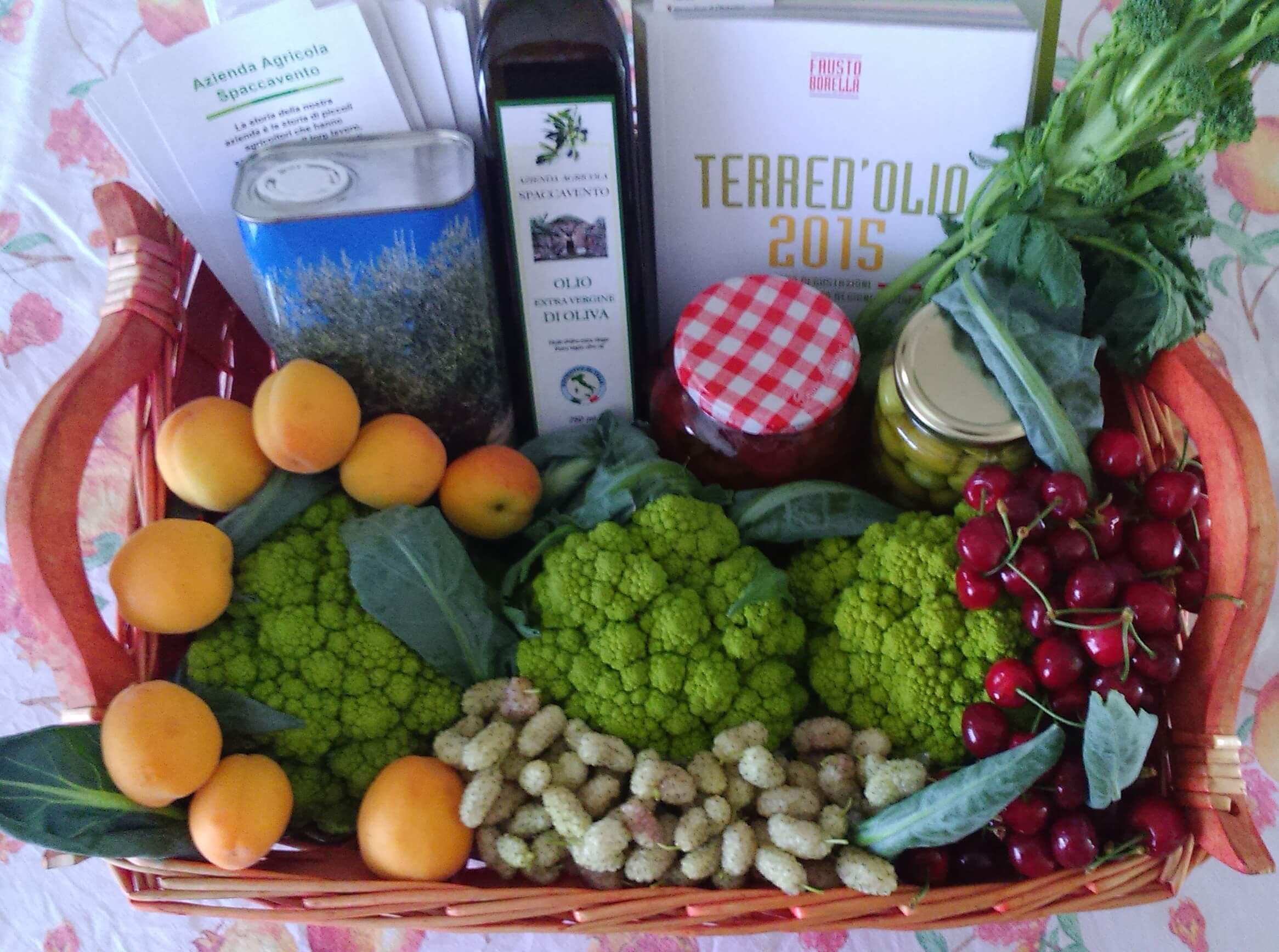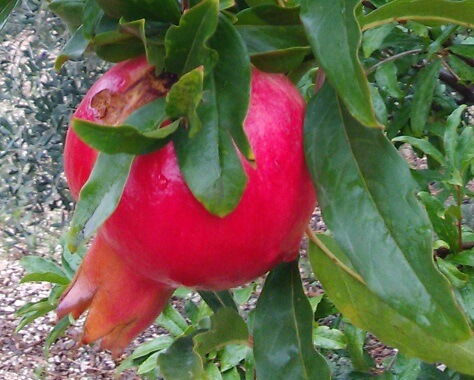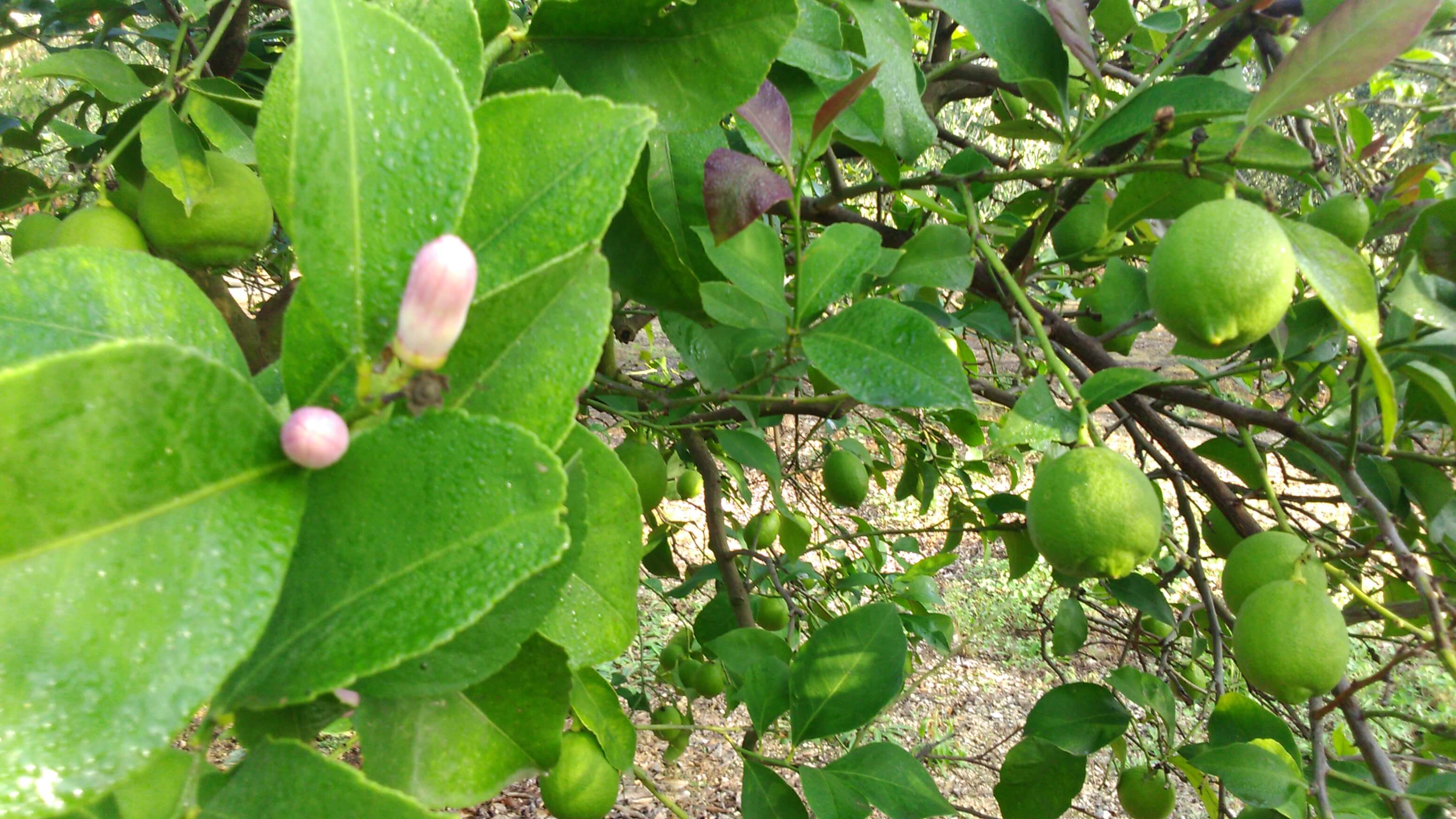Olive production
Our Land

The Spaccavento family owns and cultivates about 25 hectares of olive groves in the countryside of Molfetta, Giovinazzo and Terlizzi. The cultivated plants are old threes (in some cases we speak about 1000 years old). In average per hectare are about 150 trees. Our cultivars are "ogliarola Bari" and "Coratina" .
The production changes depending on the vintage. During full season we produce about 700 q.li of olives, we produce 350 q.li in the vacuum year (usually alternate years).
Within each quintal of olives we obtain from 13 to 20 kg of oil (depending on the cultivar, climatic factor and of the harvest period)
We follow all the olive production steps.
Pruning
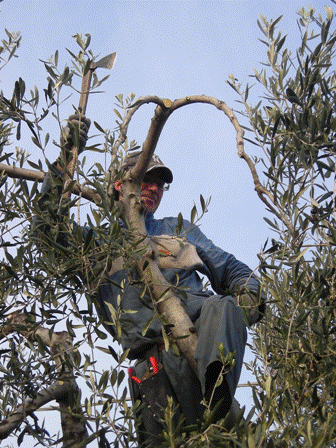
It is carried out in the period from December to March where the olive tree is not in vegetative stage. It is a completely manual operation that takes time and for each tree, in function of its size, it takes almost an hour for its pruning carried out with the typical "Accetta". All the cutted branches are crumble to became organic fertilizer and come back in life cycle of the earth.
The maximum productivity of the plant is ensured by wide open locks and properly ventilated; the olive tree, in fact, is a typical plants of the Mediterranean zones and its optimal development is ensured by the presence of a lot of light.
Harvesting
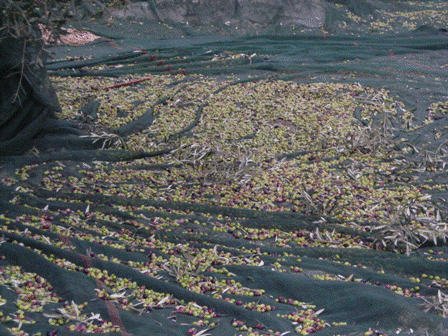
The olive harvesting is done during the period from October to December. The olives are picked directly from the tree intact with the aid of sticks, combs and small shakers and collected via tarpaulins inserted under the tree. They are then directly loaded in crates in ventilated and bring the oil mill.
If the grapes are harvested by detaching the fruit from the branches it is called "stripping". The oil obtained has a free acidity content (expressed as oleic acid) of only 0.2%, so that the oil can be labeled "extra virgin olive oil."
The olives are in fact collected in a single step to avoid damage to the plant that could affect the productivity of the following year. The olives collected for stripping, also are cleaner (and this reduces the microbial load) and don't show lesions.
Finally the technique of stripping is that which best urges the regeneration of the olive plant tissues.
Given these advantages, of course it is necessary mention the disadvantage represented by the high costs of labor.
Extra virgin olive oil menu
